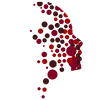Your Speech Pathologist has determined that you are at risk for certain foods “going down the wrong way” and entering your lungs. This is a problem because it can be harmful to your lungs. Your Speech Pathologist has determined that limiting your diet to pureed and smooth foods may help to reduce your risk of choking or developing pneumonia.
WHat is A pureed diet?
Being on a pureed diet means that the foods you eat will need to be blenderized until they are smooth and resemble pudding or mashed potatoes. You are usually able to have your favorite foods as long as they have been pureed first.
How to make Pureed Foods
All foods should first be cooked as usual. Place food items in the blender and press the “puree” button. Continue blending until the food is smooth and resembles pudding. THERE SHOULD BE NO CHUNKS. Often, juice or broth may need to be added to the food items when blenderizing to make sure they are smooth and pudding-like. Certain foods, such as cooked fruits and vegetables, will turn runny when pureed. In this case, potato flakes or another thickening agent should be used until mixture is pudding-thick. If you also need to use thickened liquids, use the same thickener to make sure that all foods are at least as thick as your liquids are required to be.
Foods to avoid
Some foods will always be difficult to swallow safely if you are on a soft diet. The following items should be avoided:
If there are certain foods you know you have a difficult time swallowing, you should always avoid them, even if you do not see those items listed above.
- Jello
- Nuts and Seeds
- Rice
- Bacon
- Fruits and Vegetables with Skins
- Dried Fruits
- Corn and Popcorn
- Chips and Other Crunchy Foods
- Dry Cereals
If there are certain foods you know you have a difficult time swallowing, you should always avoid them, even if you do not see those items listed above.

